When you think of Spider-Man, you might be tempted to envision him swinging jubilantly through the skyscrapers of New York, cracking jokes and capturing villains. However, in reality—well, the fictional reality conjured up by
Marvel's illustrators and storytellers—Spider-Man, aka Peter Parker, aka Webhead, has weathered a fair share of soul-crushing, heart-wrenching predicaments. From the diabolically clever archenemies he's had to tangle with to the personal catastrophes that have shattered his world, Spidey's life is far from being just one big celebration. If you think the web-slinger's existence is all about spectacular acrobatics and flirtations with MJ, prepare for an eye-opening journey through eight of the darkest chapters in Spider-Man's comic book history. And so, without further ado, let's dive deep into the 8 most excruciating things that have befallen our favorite Web-Slinger.
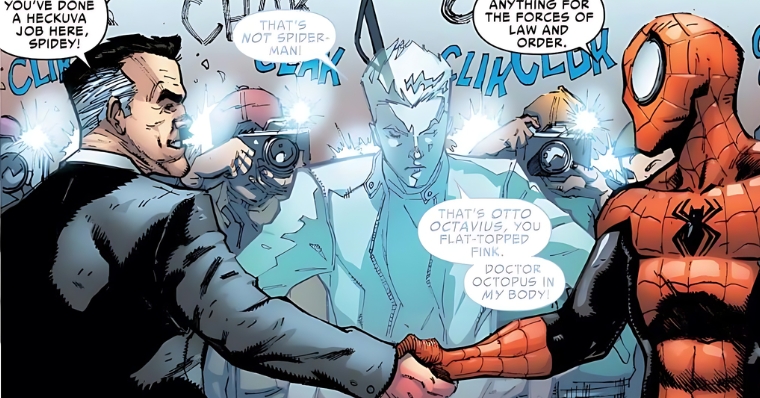
Peter Parker's Body Being Trapped by Doctor Octopus
In the rollercoaster ride that is Peter Parker's life, nothing compares to the jaw-dropping storyline that put his arch-nemesis, Doctor Octopus, right into the driver's seat of our hero's body. After paying a visit to the terminally ill Otto Octavius in the hospital, Peter experiences a shocking consciousness swap, leaving him imprisoned in Octavius' frail, dying body. Yes, the storyline raised more than a few eyebrows among the Spider-Man fanbase, but it also carved out one of the most intriguing arcs in Otto Octavius' life. Called the "Superior Spider-Man," this narrative shift took Spider-Man comics down a darker, more complex alley than we'd ever ventured before. To truly grasp this swap's weight, you must understand the long and complex history of Spider-Man's rivalry with Doctor Octopus, also known as Otto Octavius. Over the years, this villain has sported menacing mechanical arms and plotted some mind-boggling schemes, from trying to marry Peter's Aunt May for control of a nuclear facility to nearly bringing the world to its knees. But when Otto finds himself body-swapped into Spider-Man, he’s no longer just a menacing adversary; he's a potential catastrophe waiting to happen. Otto is suddenly in the super-powered body of Spider-Man and prepared to unleash a brand new kind of chaos, rebranding himself as more than just your average Spider-Man, but as a "Superior" one. Tracing the timeline of any superhero is a labyrinthine task, a dizzying whirl of overlapping storylines and reboots. But for the sake of clarity, let's zero in on "The Amazing Spider-Man," one of Spidey's most enduring comic book series. The second volume of this long-running series concluded with issue #700, a significant marker in the Spider-Verse. This comic was the grand finale of a storyline ominously titled "Dying Wish," and it took Peter Parker's life in directions that even the most ardent fan couldn't have predicted. Years of villainous acts had finally caught up to Otto in "The Amazing Spider-Man" #600, leaving him knocking on death's door. His frantic attempts to salvage his life evolve into a nefarious plot aimed at wiping out billions. When that fails, he's confined to a high-security facility called the Raft, attached to life-support machines. Enter Peter Parker, who visits Octavius at this grim location, only to find himself swapped into the dying body of his enemy, courtesy of a nifty little device known as an Octobot. As Peter languishes in Otto's decrepit form, he can only fathom the pandemonium Otto-as-Spidey could unleash. To make matters worse, Otto-as-Spidey, capitalizing on the Octobot's capabilities, recruits villains like Trapster, Hydro-Man, and Scorpion to storm the Raft and rescue who they assume is Doctor Octopus. Fast forward to "The Amazing Spider-Man" #700, the climactic showdown between Peter and Otto. Trapped in Otto's dilapidated body, Peter experiences a life-altering vision involving his departed loved ones urging him to stop Octavius. During a high-stakes battle at Avengers Tower, Otto, now swimming in Peter's memories, saves Aunt May in a visceral moment of newfound empathy. But Peter's attempt to swap back their consciousness using the Octobot is thwarted by Otto's metallic shield. Just when it seems all is lost, Peter manages a Hail Mary—invading Otto's mind and flooding it with his own life’s hardships and tragedies. Touched by these experiences, Otto promises a dying Peter that he'll protect New York and Peter's loved ones as the new Spider-Man. Thus, Otto demolishes all traces of his Doctor Octopus persona and crafts an advanced Spider-Man suit. "The Superior Spider-Man" comic series kicks off in 2013, running an initial 33 issues that delve into this mind-bending iteration of the web-slinging hero. In a multiverse teeming with different Spider-Men, revisiting an era where one of Peter's most iconic foes took the reins offers a uniquely dark and compelling chapter in Spider-Man lore.

Getting Buried Alive by Kraven
In the iconic storyline "Kraven's Last Hunt" from 1987, Spider-Man, also known as Peter Parker, grapples with one of his most nerve-wracking challenges to date. Authored by J.M. DeMatteis and illustrated by Mike Zeck, this narrative turns the tables on our Friendly Neighborhood Spider-Man in ways that are darker than his usual high-flying adventures. The suspense reaches a fever pitch when Kraven the Hunter, usually just a rung below Spidey in the villain hierarchy, suddenly ups his game. It's not just about stalking Spider-Man anymore; Kraven succeeds in actually trapping him. But he doesn't just toss him into some dungeon or hang him upside down in a web. No, Kraven ups the ante and does the unthinkable: he buries Spider-Man alive in a local graveyard. Emerging from the dirt, Spider-Man creates one of the most unforgettable visuals in comic book history, clawing his way out of his own grave under a torrential, cinematic downpour. If you're used to Spider-Man's tales filled with a sunny disposition, bold colors, and wisecracks, you're in for a jolt. The storyline plunges into the abyss of despair and contemplates themes darker than a moonless night. Spider-Man is not just fighting a baddie here but also grappling with his vulnerabilities and mortality. This kind of deep dive into the psychological turmoil of its characters gave this saga a narrative weight that many comic book stories of the time lacked. And while it seems like an odd fit for Spider-Man's generally upbeat character, this unusual approach is precisely what makes it a resounding success. Kraven the Hunter isn't your garden-variety villain in this tale. His obsession with proving he's the ultimate hunter takes a dark twist. With Peter Parker momentarily six feet under, Kraven dons a replica of the Spider-Man suit and takes over his mantle, defeating even the menacing Vermin in his new role. His point? He could be a better Spider-Man if he wanted to, but alas, he's missing the crucial elements of empathy and heroism that define Peter. When Peter finally rises, quite literally, from the dead, he's out to reclaim his identity. Yet, even though he experiences failure, saved only by Kraven's intervention. By the time the story concludes, it's clear that Kraven's mission is not just about besting Spider-Man but finding some twisted form of self-validation. And once he believes he's achieved it, his life comes to a grim, self-imposed end. In many ways, Kraven is as much a protagonist in this story as Peter, offering readers a glimpse into the darker recesses of his deranged mind. "Kraven's Last Hunt" became a quintessential Spider-Man tale and a critique of the angst-ridden, over-the-top "dark" comics that the '90s would soon pump out like clockwork. It demonstrated that you could explore complex emotions and situations without losing the essence of what makes superheroes relatable and enduring. This story might be decades old, but it continues to influence Spider-Man lore and, indeed, the broader landscape of comic storytelling. Whether you're a newbie to the world of Marvel Comics or a long-time Spider-Man aficionado, it's a story that demands to be read and pondered. Its echoes are still heard, its shadows cast, and its narrative and moral lessons are still relevant. And let's not forget: it's got one hell of a plot twist!
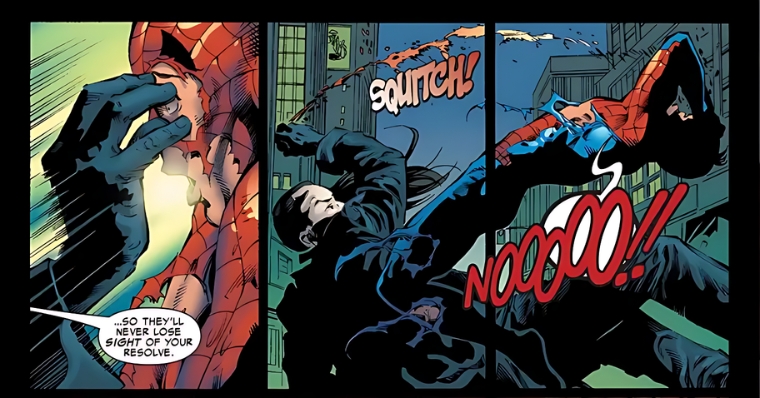
Having His Eye Ripped Out and Eaten
There are many battles in Spider-Man's long history that still send shivers down our spine, but few are as deeply unsettling as the day when Spidey's arch-nemesis, Morlun, decided to make a meal out of Peter Parker's left eye. Crafted by the exceptional J. Michael Straczynski in 2001, Morlun quickly rose to the ranks of one of Spider-Man's most formidable foes. By 2005, in the jaw-dropping story titled "The Other," this ghoul wasn't just back from the dead; he was back with a voracious appetite. For Spider-Man. In the gripping sixth installment of this saga, our beloved wall-crawler and the ever-hungry Morlun lock horns. Spanning multiple adrenaline-pumping pages, the face-off reaches its nightmarish climax when Morlun manages to rip out and, yes, devour Peter's left eye. And if you thought, "ew" right now, reading it feels a lot more intense. Let's reel it back a bit for some context. When Straczynski and John Romita, Jr. launched their Spider-Man storyline in the early 2000s, they added layers to the Spider-Man lore. The spider bite that granted Peter his powers wasn't just a mere accident but destiny. Peter wasn't merely a superhero – he was a Spider Totem, bridging the gap between human and animal realms. While deepening Spidey's mythology, this revelation also introduced him to new threats. Enter Morlun, a fiend who's part vampire and part worst-nightmare material. Morlun made his haunting entrance in 2001's "Amazing Spider-Man #30", and he wasn't dining on pizza. No, he feasted on a German superhero in front of his loyal henchman, Dex. Meanwhile, a guy named Ezekiel filled Peter in on the world of Spider Totems and their predators, the Inheritors. When Morlun and Spider-Man eventually clashed, it wasn't looking good for our friendly neighborhood superhero. Thanks to Ezekiel's timely intervention, Peter lived another day, leveraging his radioactive nature to render himself unappetizing to Morlun. But Dex's bullet truly put Morlun down... at least for a while. Fast forward to "The Other." A dying Peter, grappling with a mysterious illness, found himself in Morlun's crosshairs again. Their reunion in "Amazing Spider-Man #526" was anything but sweet. After the gruesome eye-gourmet session, a severely battered Peter was left for dead, with Morlun planning a later course. Mary Jane's brave attempt to fend off Morlun proved futile even at the hospital. However, Peter's reawakening was an event to behold, showing a side of him that was more spider than man. His retaliation? He fed on Morlun, evolving into something... different. In a tale of savagery and rebirth, "The Other" showcased a side of Spider-Man most fans had never seen. Morlun, a predator from a family known for hunting spider totems across the multiverse, gave Peter a run for his money. But as always, Spider-Man's resilience proved that he's not just any superhero. He's a legend, ready to rise, no matter the odds or adversaries.
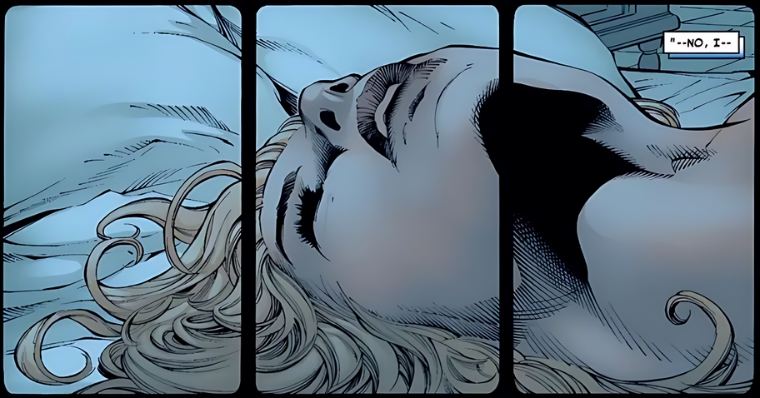
The Gwen Stacy and Norman Osborn Affair
In 2004, the Spider-Man comic universe dropped a narrative bombshell with the storyline "Sins Past," aiming to further flesh out Gwen Stacy's impact on Peter Parker's life. The plot revealed that Gwen Stacy and Norman Osborn, the Green Goblin himself, had an affair that resulted in the birth of twins. And get this—these weren't your average kids. Let's delve into this convoluted tale. These twins aged at an alarming rate due to their exposure to the Green Goblin's serum. As if that's not perplexing enough, the twins grew up brainwashed into thinking Peter was their dad. The cherry on top? They were convinced that Spider-Man had murdered their mom, Gwen. This story is a tangle of emotional strings that stretch credibility, adding shades of Jerry Springer to the Spider-Man universe. But wait, there's more, and it's enough to get your spider senses tingling. Mary Jane knew all along about Gwen's illicit love affair and the kids. She had kept it under wraps, honoring her promise to her late friend Gwen. The reveal was like ripping off a Band-Aid on a decades-old wound for Peter. In a canon full of narrative twists, from Peter's clone saga to body swaps with Doc Ock, Spider-Man comics have always been a potpourri of the fantastic and the shocking. But "Sins Past," penned by J. Michael Straczynski, adds an element of melodrama that could rival any telenovela. The six-issue storyline kicks off in "Amazing Spider-Man #509" when Peter discovers a letter written by Gwen before her tragic death. Stunned and intrigued, Peter visits her grave, only to be ambushed by a duo of mysterious figures. After barely evading capture, Peter resorts to DNA testing—this involves the creepy task of exhuming Gwen's body—to discover the identity of his assailants. Enter Sarah and Gabriel, the unlikely offspring of Gwen Stacy and Norman Osborn. The ever-supportive Mary Jane, bless her soul, becomes the narrator of this bizarre story. She reveals that Gwen had connected with Norman at a vulnerable point in her life, shortly after her father, Captain George Stacy, passed away. Gwen had an affair with Norman during a trip to France. With time behaving a bit wonky in the comic world, the twins aged far more quickly due to their goblin-tinged DNA. The catch? Their accelerated metabolism is also killing them. Sarah ends up in the hospital after taking a bullet from her brother Gabriel, who's hell-bent on revenge. Peter saves her by giving her a transfusion, slowing down her rapid aging. On the other hand, Gabriel dives headfirst into villainy, embracing the goblin formula and attacking Peter as the Grey Goblin. Sarah intervenes just in time, sabotaging Gabriel's glider and saving Peter. And then, poof! Both twins vanish into thin air. One could say that Mary Jane's decision to keep Gwen's affair a secret is a gray area. It's both an act of betrayal and sacrifice that she made to protect Peter's idyllic memories of Gwen. The storyline certainly gives a far darker undertone to Norman's motivation for killing Gwen in the classic "The Night Gwen Stacy Died." In retrospect, the "Sins Past" storyline has been retconned, likely a relief to many fans. With Gwen Stacy's character gaining prominence, especially with Hailee Steinfeld's Spider-Gwen in "Spider-Man: Across the Spider-Verse," and fans still hopeful for Emma Stone's live-action return, this is one past sin that the Spider-Man franchise may prefer to leave buried.
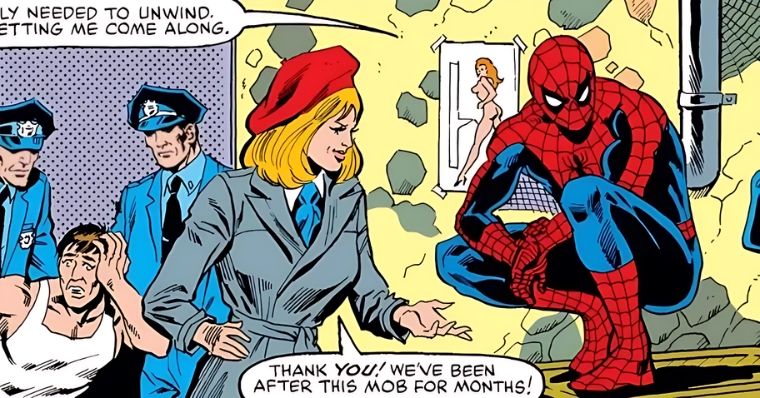
The Death of Jean DeWolff
When we talk about life-altering tragedies in Peter Parker's existence, names like Gwen Stacy and Uncle Ben usually take center stage. Yet, nestled between these prominent figures is a name that doesn't get enough airtime—Jean DeWolff. She was no ordinary beat cop; Jean was an NYPD detective who developed a unique rapport with Spider-Man. Their partnership kicked off in "Marvel Team-Up #48," where they collaborated to neutralize a bomber who posed a significant threat to New York City. Fast-forward to the much darker storyline of "The Spectacular Spider-Man #107," and Jean's life comes to a gruesome end at the hands of her own brother, no less. It's a shocker, the kind that rocks you to your core. Enraged and disoriented by this revelation, Peter hunts down Jean's sibling, mercilessly beating him up. The incident left an indelible scar on the web-slinger, a scar that forced him to confront the sometimes blurry lines between justice and vengeance. But what makes the "The Death of Jean DeWolff" storyline, conceived by Peter David and Rich Buckler, so compelling isn't just the emotional toll it took on our hero. The tale also introduced us to Sin-Eater, a maniacal serial killer and arguably one of Spider-Man's most underrated adversaries. Though armed only with a shotgun, Sin-Eater's reign of terror was the catalyst for a watershed moment in the Spider-Man saga. He was the epitome of evil that lurked in the shadows, in places where even Spider-Man's spider-sense couldn't always reach. This story arc wasn't just a gripping murder mystery; it set the stage for more sinister villains down the line. It was as if Jean DeWolff's murder opened a Pandora's Box, culminating in the birth of one of Marvel's most iconic villains—Venom. In the narrative, another character, Emil Gregg, initially claims to be the Sin-Eater, creating a media frenzy that ropes in Eddie Brock, an overzealous reporter. But the real Sin-Eater turned out to be Stan Carter, the same cop who had informed Spider-Man of Jean's death. The twist is diabolically clever: Emil was only hearing Carter's self-recorded confessions through the walls of their adjoining apartments. Emotionally charged and at a breaking point, Spider-Man nearly succumbs to the allure of ending Sin-Eater’s life himself. He's halted just in time by Daredevil, another vigilante with his own complicated ethical code. In a perverse twist of fate, Spider-Man then has to protect Carter from an angry mob, wrestling with his own moral compass while doing so. The fallout didn't stop there. Eddie Brock, whose reputation crumbled due to his false reporting, spirals into a venomous pit of despair and anger. Holding Spider-Man accountable for his downfall, Eddie Brock becomes the host of the alien symbiote, turning him into Venom. This new villain would become a cornerstone in Spider-Man’s rogues' gallery for years to come. In a labyrinth of intertwined fates and cascading consequences, "The Death of Jean DeWolff" is a story that’s a lot more than a side-note in Spider-Man’s extensive history. It forced Peter to teeter on the edge of his principles and shook his moral code's foundations. And for the fans, it's a masterclass in storytelling that's emotionally resonant, morally complex, and infinitely captivating.
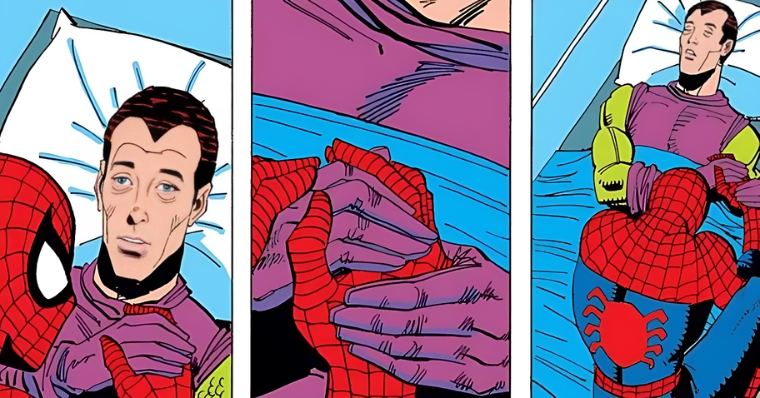
The Unforgettable Loss of Harry Osborn
People often talk about the pain Peter Parker has endured—the loss of his uncle and his first love, Gwen Stacy. Yet, some overlook the gut-wrenching moment he had to say goodbye to his closest friend, Harry Osborn. You find this devastating event unfold in "The Spectacular Spider-Man #200," a story that tests the complex tapestry of friendships, betrayal, and redemption. In the comic, written by the legendary duo of J.M. DeMatteis and Sal Buscema, Harry Osborn grows distant from Peter after blaming Spider-Man for the death of his father, Norman Osborn, the original Green Goblin. The twists and turns of the narrative culminate when Harry discovers that Peter Parker is actually the web-slinging hero he blames for his father's demise. Shocked and angered, Harry decides to inherit his father’s villainous persona, the Green Goblin, with a single mission: to end Spider-Man. Harry’s plans get blurry, though, during a heart-stopping assassination attempt. The moment he sees the look of terror in Mary Jane's eyes, Harry hesitates. But it’s too late; the damage is done. Suffering from a severe injury, Harry uses his dying breaths to apologize to Peter, collapsing in the arms of his estranged best friend. This storyline was far from Harry's first appearance as the Green Goblin; he'd wrestled with this dark alter-ego before, a manifestation of his psychological struggles. Always lurking in his father's overwhelming shadow, Harry often felt compelled to be a "true Osborn," which took its toll on his self-esteem. His friendship with Peter did little to alleviate his emotional turmoil. Viewed objectively, Peter comes off as a less-than-ideal friend, more engaged in his dual life than in Harry's well-being. This naturally exacerbated Harry’s resentment toward him. So, when Harry donned the Green Goblin’s garish attire, it wasn't a quest for power or riches. It was a scream for validation from a man spiraling into the abyss of his own mind. Driven by betrayal and loneliness, Harry was more compelling as a villain precisely because of his humanity—a blend of emotional vulnerability and misguided vengeance. In later story arcs, Harry did find some semblance of peace. He built a family with Liz Allen, his wife, and their son Normie. The appearance of domestic bliss made his eventual downfall all the more agonizing. Unlike his father, Norman, who could never relinquish his villainous alter-ego, Harry tried to leave behind the darkness and focus on his family. That's what makes his story under DeMatteis and Buscema in "The Spectacular Spider-Man" so heart-wrenching. In the arc 'The Child Within,' readers get to peel back multiple layers of Harry's character. His internal struggles are masterfully portrayed, amplified by his interactions with manifestations of his father and Peter, who haunt his conscience. Despite these struggles, Harry remains a deeply relatable figure—especially in his interactions with his son, Normie. The narrative concludes with Harry's actions spelling doom for himself but saving those he loves, highlighting his tragic yet uplifting journey. Harry’s last words to Peter were poignant in their simplicity as he lay dying: "What else could I do? You're my best friend." Thus, he perishes in an ambulance, with Peter at his side, leaving readers and the Spider-Man himself to contemplate the intricacies of friendship, the complexities of good and evil, and the relentless tide of fate. While Harry has been resurrected in later Marvel storylines, the essence of his character remains indelibly marked by this compelling, tragic arc. Even years after its initial publication, "The Spectacular Spider-Man #200" remains a quintessential tale that speaks volumes about the multifaceted nature of villainy and heroism, offering a glimpse into the lives of characters whose struggles are almost Shakespearean in their depth. It doesn’t just make Harry one of Marvel’s most tragic villains; it turns him into an eternal figure whose story reverberates with emotional truth far beyond the pages of a comic book.
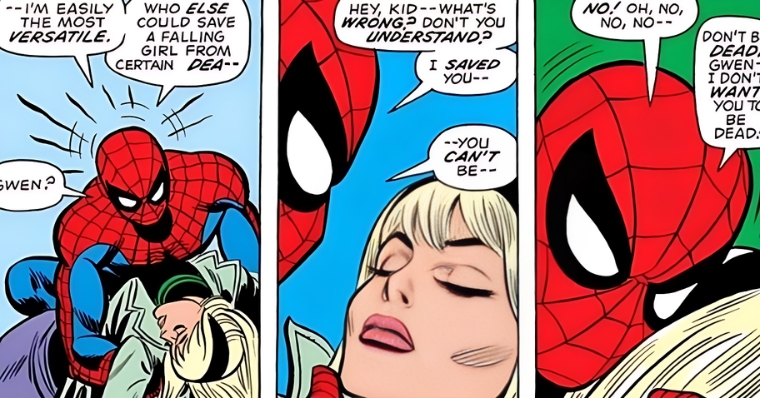
The Death of Gwen Stacy
In the iconic issues of "The Amazing Spider-Man #121-122," a storyline that's been tattooed on the souls of Spider-Man fans worldwide, we're served a devastating blow that shook Peter Parker to his core. This isn't just your run-of-the-mill villain showdown; this is personal warfare waged by the malevolent Green Goblin, aiming straight for Peter's heartstrings. So what does the Green Goblin do? You bet he ups the ante—kidnapping Peter's love, Gwen Stacy, and taking her to the dizzying heights of the George Washington Bridge. Spider-Man makes a split-second move to save her as she's flung into the abyss. But the next instant reveals a heart-wrenching truth that still echoes in comic book lore: Gwen Stacy is dead. That fateful episode marked its 50th anniversary, but its shockwaves are still felt today, pulsating through the fabric of the Spider-Man universe and even the broader realm of comics. Why did Gwen's death hit so hard? Why did it turn into such a seismic event? You see, at the age of just 20, writer Gerry Conway took the helm of "The Amazing Spider-Man" with his run starting at issue #111. In the short span of 11 issues—technically closer to eight if you factor in some adaptations—Conway flung a story into the world that would be immortalized. He did it at a time when comics were perceived as a dying medium, a sentiment he openly shared: "We thought the business was gonna be gone in three or four years." But instead of fading away, his narrative touched on themes that would continue to resonate for decades. Gwen's demise fundamentally shifted the storytelling paradigm. For one, it showed the world that comic book characters, especially those dear to superheroes, were not invincible. But more specifically to Spider-Man, her death solidified the essence of tragedy in the webslinger's tales, promoted Mary Jane Watson from a supporting role to a leading lady, and established a sort of indelible milestone that future story arcs could never ignore. While struggling with the duality of his identity as Spider-Man, Peter Parker had previously turned a blind eye to the Green Goblin’s amnesia-induced innocence. Let's be real: It wasn't his finest moment in decision-making. He rationalized it away, perhaps subconsciously thinking, "What are the odds he’ll regain his memory, abduct Gwen, and orchestrate her murder just to mess with me?" Alas, life—or, rather, Conway—had other plans. Gwen's death reinstalled the theme of tragedy at the forefront of Peter's journey, a theme that had been on the back burner since the early days of Uncle Ben's death. The Spider-Man narrative, once based on a struggle with responsibility and a battle against crime, now carried a darker undertone. The concept of Peter facing personal loss as a side-effect of his superhero career became a recurring motif, leaving an indelible mark on how Spider-Man stories were told henceforth. The shift in Peter's love life was another pivot point. Gwen had been the epitome of the "good girl," but Conway saw a more dynamic foil for Peter in Mary Jane Watson, the "not-so-good girl" with layers of complexity. Her presence before Gwen’s death was minimal, but in the wake of the tragedy, Mary Jane became a pillar in the Spider-Man universe. Her character underwent a transformation, becoming more nuanced and introspective, a far cry from Stan Lee's somewhat dismissive portrayal of her. Gwen's death wasn't just another story arc; it was a defining moment, a sort of narrative gravitational force to which future storylines would inevitably be pulled back. This event is continually referenced in various story arcs, including ones like "Webspinners: Tales of Spider-Man." Its significance parallels, and in some ways overshadows, the initial tragedy of Uncle Ben's death that pushed Peter into his superhero path. In summary, the loss of Gwen Stacy served as a watershed moment, coloring every Spider-Man tale that came afterward. Its role as a constant touchstone for future narratives adds a layer of emotional depth and complexity, forever altering the contours of the Spider-Man mythos. So, even after all these years, the night Gwen Stacy died remains, hauntingly, a night we can never forget.

The Death of Uncle Ben
Most people who have a passing familiarity with the Spider-Man saga know Uncle Ben for his age-old wisdom encapsulated in the phrase, "With great power comes great responsibility." But Uncle Ben was far more than a one-liner in Peter Parker's life. He was a cornerstone of love, values, and moral fortitude in a world fraught with dangers, both common and extraordinary. Serving as a father figure to Peter, Uncle Ben's demise was nothing short of a seismic event, rocking the very foundation of Spider-Man's universe. The subsequent chain of events that led to his death—namely Peter's youthful arrogance and negligence—served as gut-wrenching life lessons. These lessons would recalibrate Peter's moral compass and compel him to embrace his newfound abilities as a force for good. In the realm of comics, Amazing Fantasy #15 is where it all began, the brainchild of legendary creators Stan Lee, Steve Ditko, Stan Goldberg, and Artie Simek. When the burglar Peter arrogantly let slip past him and went on to take Uncle Ben's life, the young superhero faced a reality where his actions had irreversible, devastating consequences. The notion of living up to Uncle Ben's ideals became the fuel that ignited Spider-Man's sense of purpose, perpetually etched in his consciousness like an indelible ink stain. For instance, in "Spider-Man: Life Story," Ben’s memories haunt Peter's dreams, driving home the point that his initial failure remains a sort of 'original sin,' something to repent for but never to forget. In an alternate reality, as envisioned in the 1998 comic "Spider-Man Chapter One #1" by John Byrne, Spider-Man's story takes a twist that makes his journey even more gut-wrenching. Here, Peter Parker isn't just a hapless teen bitten by a radioactive spider; instead, he survives a deadly explosion orchestrated by none other than Doctor Octopus. This explosion kills many, but Peter gains his powers from a now-radioactive spider who also miraculously survives the blast. In this version, Peter becomes a stuntman and a celebrity, awash in the glow of fame and fortune. From the X-Men to the Fantastic Four, his stardom catches the eyes of awe-struck fans and the superhero elite. Yet, his fame becomes a double-edged sword. His celebrity status attracts a crazed criminal who mistakes Spider-Man for a fellow outlaw. A series of mistakes and missed opportunities culminate in Uncle Ben's tragic death—only this time, the killer was specifically looking for Spider-Man. The layered narrative makes Spider-Man's responsibility in the death of Uncle Ben even more poignant. It wasn't just negligence; his newfound arrogance and obsession with fame brought the killer right to his doorstep. This might not be part of the mainstream Marvel canon, but it's a harrowing reflection on how the quest for personal gain can create monsters that would take away someone as irreplaceable as Uncle Ben. The lesson is unequivocal in the final reckoning, whether we talk about the Spider-Man from Amazing Fantasy #15 or the darker, alternate universe version. Fame has its price, sometimes steep enough to shake the heavens and rattle the soul. For Spider-Man, the lessons learned from the death of his father figure, Uncle Ben, remain the unyielding foundation of his super-heroic ethos, warning him that his powers should never serve as tools for vanity or selfish gain.









